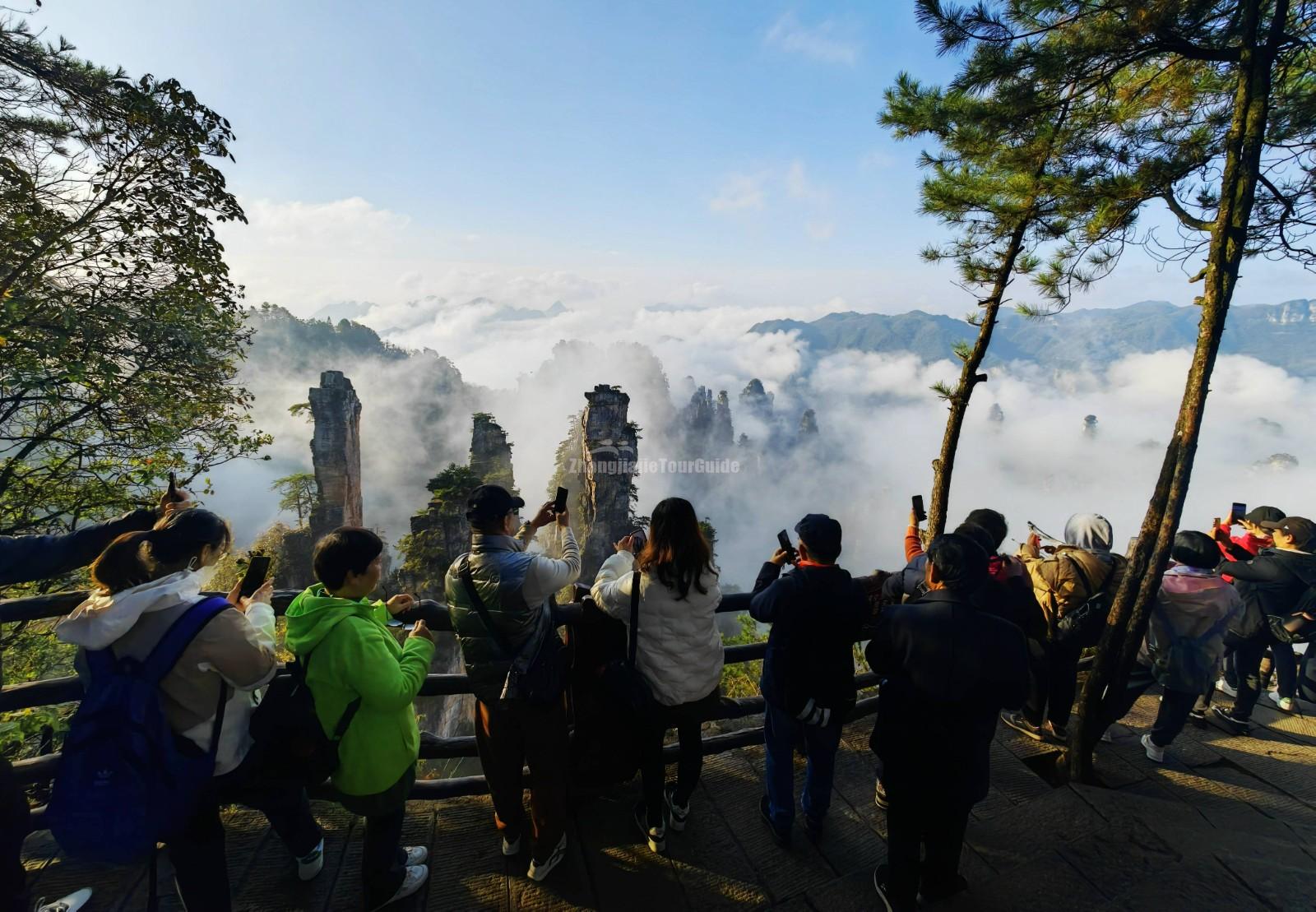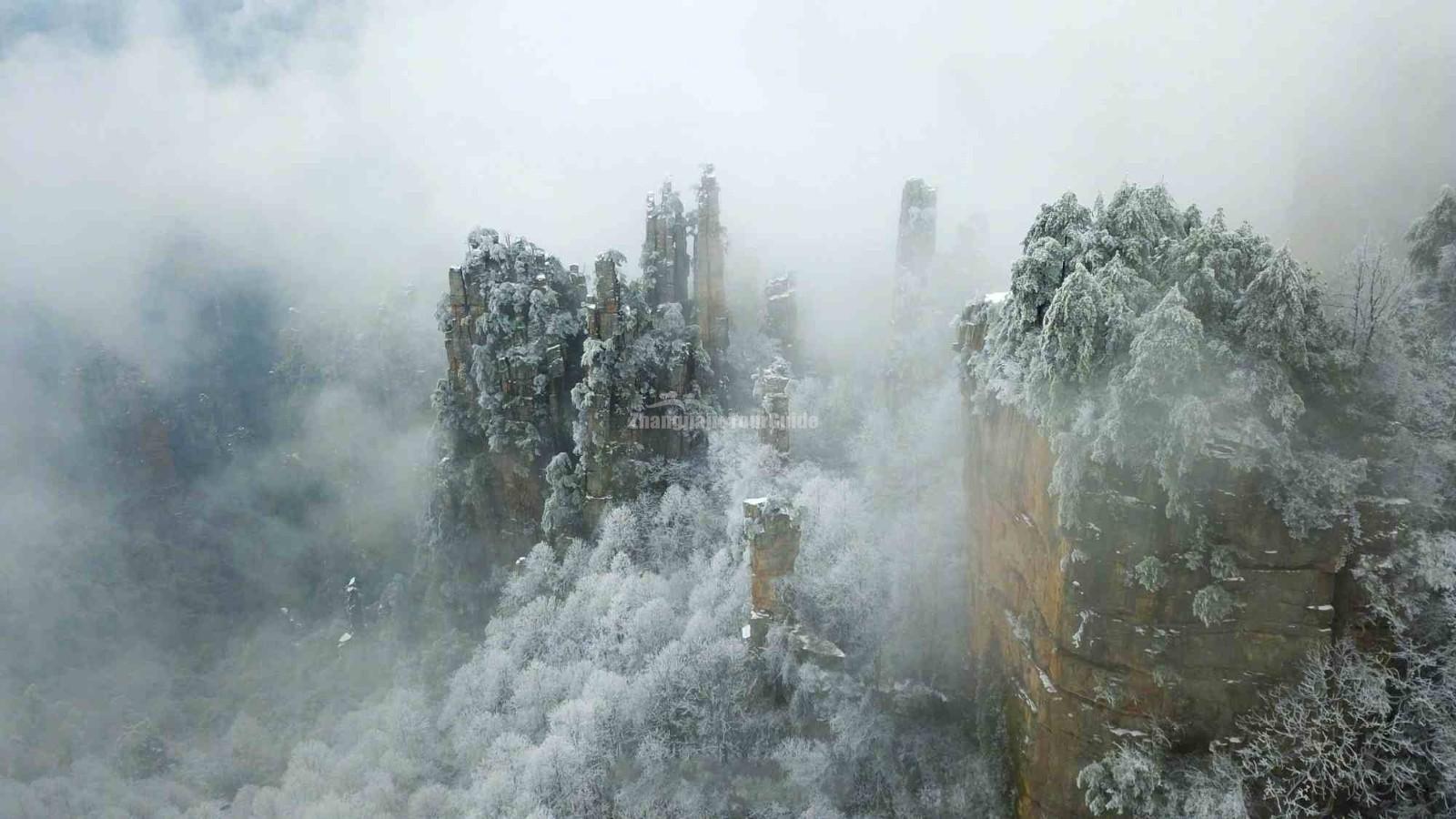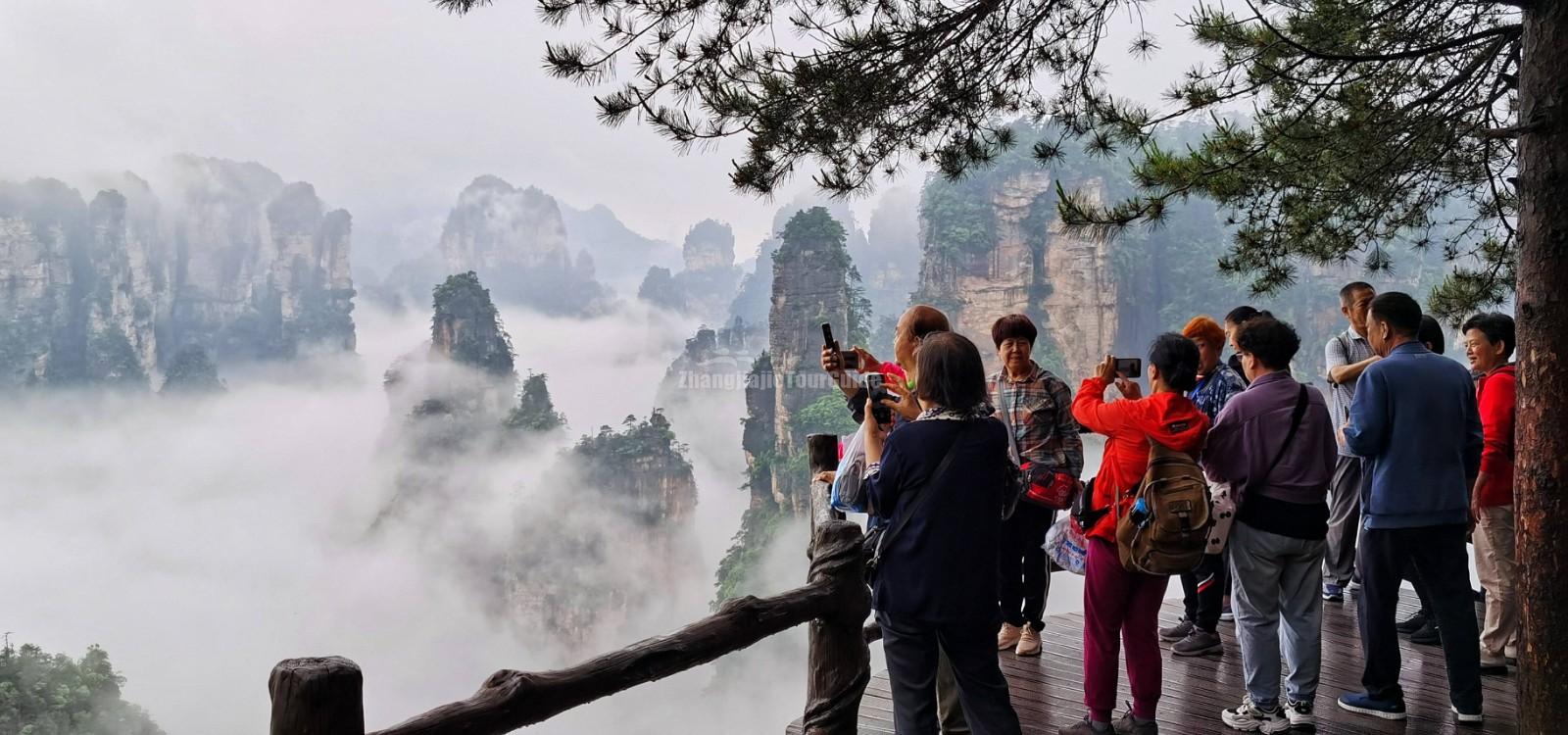Zhangjiajie National Forest Park, home to the otherworldly "Avatar Mountains," is a UNESCO World Heritage site that captivates every visitor. But its magic can be diluted by thick fog obscuring the views or overwhelming crowds jostling for space. Timing your visit is crucial for the optimal experience. Here’s your guide to finding the best time to visit Zhangjiajie to avoid crowds and fog:
The Golden Sweet Spot: Late Spring & Autumn
April - Early June: After spring rains subside (usually by mid-April), humidity drops, significantly reducing fog frequency. Temperatures are pleasant (15-25°C / 59-77°F). Crowds are moderate before the peak summer rush. Lush greenery is vibrant. Tip: Avoid the first week of May (China's Labour Day holiday), which is extremely crowded.
Late September - Early November: Widely considered the absolute best time. Fog is least common, replaced by crisp, clear air offering breathtaking visibility. Autumn colours paint the forests in stunning hues. Crowds thin considerably after the National Day holiday (Oct 1-7). Pleasant temperatures prevail. Tip: October is prime time, especially mid-to-late October.
The Trade-Off Seasons:
Summer (July - August):
Pros: Warmest weather, lush scenery, highest chance of completely clear skies (though humidity can build). Waterfalls are fuller.
Cons: PEAK crowds (especially domestic Chinese tourists and students on break). Highest humidity, leading to frequent morning fog/mist that can burn off by midday (but not guaranteed). Hotter temperatures can make hiking strenuous. Afternoon thunderstorms are common.
Crowd/Fog Strategy: Visit major sights very early in the morning (pre-8 am) to potentially beat both the fog lifting and the biggest crowds. Be prepared for queues.
Winter (December - February):
Pros: Lowest crowds by far. A magical, ethereal atmosphere when snow dusts the peaks. Dramatic cloud seas below the summits can be spectacular (though different from fog).
Cons: Highest chance of persistent fog/low cloud, especially in January/February, potentially obscuring views for days. Cold temperatures (can be below freezing), icy paths requiring caution, and occasional park closures. Shorter daylight hours.
Crowd/Fog Strategy: Ideal for solitude seekers willing to gamble on weather. Check forecasts closely and be flexible. Snowy views are incredible when clear.

Spring (March - Early April):
Pros: Blooming flowers, fresh greenery. Fewer crowds than summer.
Cons: Highest rainfall and fog frequency. Views can be obscured for extended periods. Trails can be muddy.
Key Strategies to Beat Crowds & Fog Regardless of Season:
Visit EARLY: Be at the park gates at opening time (often 7:00 or 7:30 AM). Morning light is also best for photography, and fog is more likely to lift as the day warms.
Target Weekdays: Avoid weekends and Chinese public holidays whenever possible.
Explore Less-Hyped Areas: While Avatar Hallelujah Mountain is iconic, trails like Golden Whip Stream (lower valley) or areas around Yangjiajie can be quieter and less fog-prone.
Be Flexible & Patient: Mountain weather is fickle. Fog can roll in and out. Have a backup plan for different areas of the park if one is obscured.
Consider Shoulder Months: Late May/June or September offer a good balance if you can't make the prime Oct/Nov window.
For the best chance to experience Zhangjiajie's awe-inspiring pillars with clear views and manageable crowds, prioritize late September to early November (especially October) or April to early June (avoiding Labour Week). While summer offers warmth and potential clarity, be prepared for significant crowds and humidity-driven fog. Winter offers solitude but the highest fog risk. By choosing your timing wisely and employing smart strategies, you can unlock the true magic of Zhangjiajie, avoiding the frustration of obscured views and overcrowded paths. The effort to find that perfect window is undoubtedly worth it.

